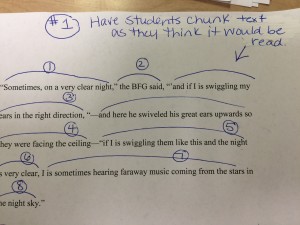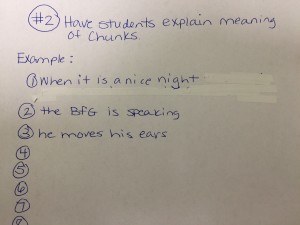I recently was in a meeting where the question was asked: Does grammar affect reading? My answer—ABSOLUTELY! Students must understand how sentences work both orally and in written form. Having experience with sentence structure, punctuation, and grammar helps students to “untangle” difficult sentences they encounter. Without grammar and punctuation students’ prosody (expressive reading with understanding of timing, phrasing, intonation and emphasis) is not possible.
Common Core brought three shifts in the English Language Curriculum including the following:
- Exposure of complex text AND their academic language
- Reading, writing and speaking grounded in the evidence from the text source
- Increase informational text
The second shift makes grammar essential to the ELA classroom. Remember a few weeks ago, in a blog entitled “What Does ELA Rigor and Complexity Look Like?” shared what elements make a text complex. Academic language is the words, grammar and the author’s craft in organizing a text. The academic language is used to describe the complex ideas that are embedded in the rigorous text. It is this essential shift in our ELA standards that reminds us that we must embed grammar and teach students to use these skills to decode and “untangle” ideas in the text rather than to teach it in isolation.
We think of academic language as only Tier II and III words but it is actually made up of three components which each include a piece aided by grammar understanding:
- Words/Phrases and use of multi-meaning words (understanding grammar aids students using Context Clues)
- Sentence Dimension including uses of phrases and clauses (embedded Grammar Understanding including punctuation and sentence structure helps students understand complex sentences)
- Oral and written language to communicate complex ideas (better understanding of grammar helps writing and oral communication to improve)
When we provide students complex text at any level, they have to “untangle” it and grammar is a vehicle by which this can happen. Complex text can be used at any grade level.
For example, the BFG by Roald Dahl, is not a particularly complex text upon first glance with a 720 Lexile Level (3rd Grade). However, in a guided reading group, you could pull out this excerpt:
“Sometimes, on a very clear night,” the BFG said, “’and if I is swiggling my ears in the right direction, “—and here he swiveled his great ears upwards so they were facing the ceiling—“if I is swiggling them like this and the night is very clear, I is sometimes hearing faraway music coming from the stars in the night sky.”
Example of excerpt to give students: excerpt
Try this:
- Asking students to read this small section and have them read it independently. Do you think they would know how to use proper intonation while reading? Would they understand the purpose of the hyphen, quotation marks, apostrophe, and commas which each contribute to the meaning and understanding of the words swiggling and swiveled.
- Have students “chunk the text” to show the intonation for reading. After or above each “chunk,” ask students to explain what each chunk means through annotation.


- Pair students to discuss how similar their “chunks” are to one another.
- Have each partner read the excerpt the way they think it should be read and then the other. Have them discuss which sections they felt sounded different between one another and why?
- Teacher then should model how to chunk the sentence properly and explain the “grammar” or features (phrases, clauses, punctuation, etc.) that help the reader understand.
- Students should then practice with their partner the correct intonation together for several minutes.
This is a simple activity that will provide direct instruction on fluency AND increase students’ awareness of how sentences are structured.
This type of lesson can follow grammar instruction. If you have been teaching about commas in a list, you can find a complex sentence that embeds a list with commas. Have the students chunk it and figure out how those commas affect the reader and meaning. Instead of daily grammar practice, you can embed grammar instruction in your guided reading groups each week.
Do not leave grammar out! Hopefully, this begins your thinking about how grammar plays a part in our students’ comprehension and fluency. This can be done at any level—even in kindergarten! See this video for an example: Kindergarten Butterfly Lesson: https://vimeo.com/47315992
Try this out in a guided reading group—this is a great example of a close read while working on fluency! I am excited that my school’s 4th and 5th grade teachers are finding ways to use grammar to deepen learning. Hoping this idea may help! Look below for some other resources that may help—AND as always—I am here!
Resources:
NCDPI ELA Wiki–look at “Juicy Sentences” lesson
This article explains why embedding grammar works–check out this article: Teaching Grammar a Method that Works
PPT from Lynne Weber has some great advice on types of grammar you can focus on and examples. This is one that will help you learn as an educator!
Article on Sentence Combining which is a great read. Research shows one of the best ways to improve writing of students is to teach and practice sentence combining.